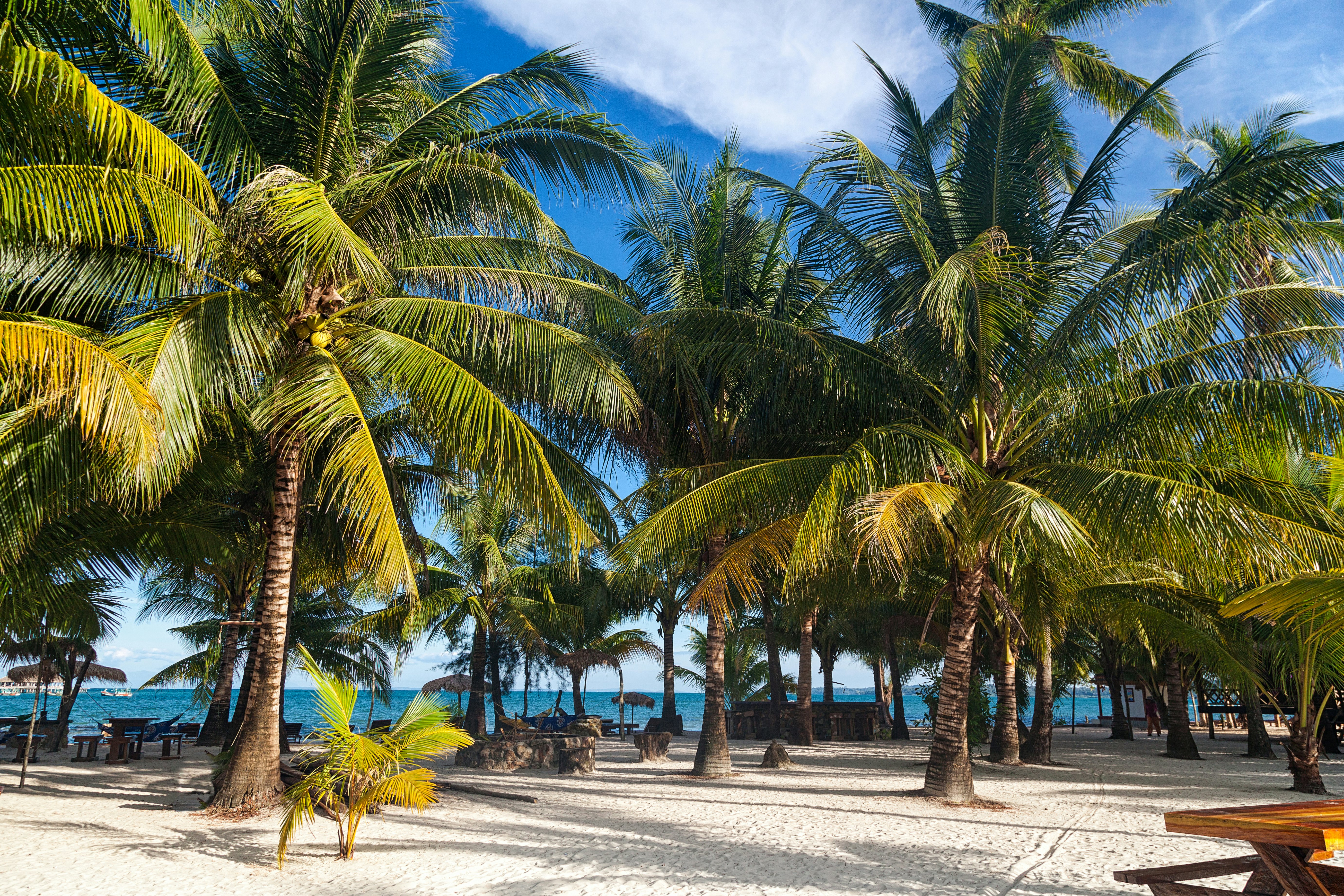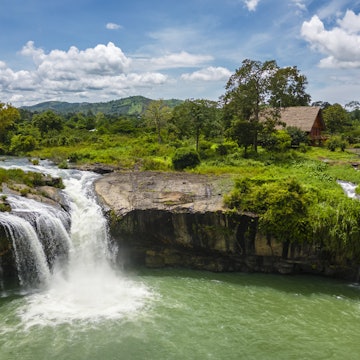

Wat Ounalom in Phnom Penh. Sergei Mugashev/Shutterstock
For a bite-sized wedge of Southeast Asia, Cambodia has an impressive amount of ancient temples, bustling cities, island escapes, wild nature protected within national parks, and blissful beaches. But it’s the people who leave a lasting impression, thanks to an unbreakable spirit and infectious optimism. Don't be surprised when your departure date nears and you are scrambling to extend your tourist visa.
Discover the ins and outs of entering and exiting Cambodia, with the lowdown on getting a visa on arrival and e-visas. Check the country's immigration website to stay on top of any updates.
Do I need a visa to visit Cambodia?
The simple answer is probably yes: most nationalities need a visa to enter Cambodia, including citizens of Australia, the EU, the UK and the US. The main exceptions are citizens from the Association of Southeast Asian Nations (ASEAN), who are granted visa-free access; these countries include Singapore, Thailand, Malaysia and Vietnam. Citizens of Afghanistan, Algeria, Bangladesh, Iran, Iraq, Nigeria, Pakistan, Sri Lanka and Sudan need to make advance arrangements for a Cambodian visa.
A 1-month tourist visa costs 30 US dollars (US$), and easily extendable business visas cost US$35. The Cambodian visa no longer takes up a full page in a passport booklet but is now a small rectangular sticker with a QR code containing all the relevant visa details.

Do I need a photograph?
Photos are no longer required with visas for those arriving at airports, although some land crossings still request them and charge US$2–3 if you do not have one.
What is e-arrival?
All tourists arriving in Cambodia by air are required to complete an online e-arrival through the dedicated app (available for Apple and Android), which can be done at any time 7 days prior to your arrival. The e-arrival replaces the hard copy arrival and departure card, health document and customs form with a V-pass electronic entry stamp sent to your email. If you are arriving overland, it is still necessary to complete the printed forms.
Can I get a visa on arrival?
Visa on arrival does what it says: present your passport on arrival and pay the visa fee for a 30-day tourist or business visa. It may take 10–20 minutes to process, depending on the number of passengers who require a visa. There are ATMs at all the major international airports in Cambodia should you require US dollars in cash, but debit and credit card payments are also accepted.
What about e-visas?
It is easy to arrange a Cambodian e-visa as part of an e-arrival application, also costing US$30 per person, with no additional processing fee for the visa in the app. This can save time and paperwork queuing for a visa on arrival and avoid any visa overcharging at major land borders.

What you need to know when applying for a Cambodian visa
Ensure that your passport is valid for at least 6 months from your planned entry or you won’t be allowed to enter the country.
Applying for a visa through the e-arrival app can take 24–72 hours to issue the visa, so plan ahead or get a visa on arrival.
It is possible to apply for longer-stay visas at Cambodian embassies around the world.
Can I extend my Cambodian visa?
Those seeking work in Cambodia should opt for a business visa, as it is easily extendable for longer periods, including multiple entries and exits. A tourist visa can be extended only once and only for 1 month, and does not allow for reentry. Overstaying a visa currently costs US$10 a day.
Visa extensions are issued at the immigration office on Russian Blvd in Phnom Penh, opposite the old airport. Extensions are easy to arrange in person, taking just a couple of days. The cost is US$45 for 1 month (for both tourist and business visas), US$75 for 3 months, US$155 for 6 months and US$285 for 1 year. Otherwise, some hotels and travel agents in Phnom Penh can help with arrangements for a small fee.

Where can I enter Cambodia?
Cambodia has three international gateways for arrival by air: the new Techo International Airport, serving the capital Phnom Penh; Siem Reap-Angkor International Airport, gateway to Siem Reap and the temples of Angkor; and Sihanoukville International Airport on the South Coast. There are also a large number of land borders with neighboring Thailand, Vietnam and Laos. (As of June 2025, land borders with Thailand are closed for overland crossings due to an ongoing border dispute between the two countries.) Formalities at Cambodia’s international airports are generally smooth, whereas land borders can be a bit slower depending on the location.
When crossing at land borders, immigration officers may try to extract some extra cash, either for the visa itself or via some other small scam. Crossing from Thailand, immigration officials may demand payment in Thai baht and round up the exchange rate considerably in their favor. Overcharging is also an issue at the Laos border but is not usually a problem at Vietnam's borders.
Using the e-visa, it is only possible to enter Cambodia via four overland border crossings: Poipet and Cham Yeam on the border with Thailand, Bavet on the Vietnam border, and Trapeang Kriel on the Laos border. Arranging an e-visa in advance through the e-arrival app can help avoid any hassles or surcharges at some of these popular border crossings.
Moving on from Cambodia
The international departure tax for Cambodia is already calculated in the cost of your airline ticket, so there is nothing to pay at the airport.
Although e-visas are accepted at only four international land border crossings, it is possible to exit via any land border with an e-visa, even the smaller, remote international crossings.














